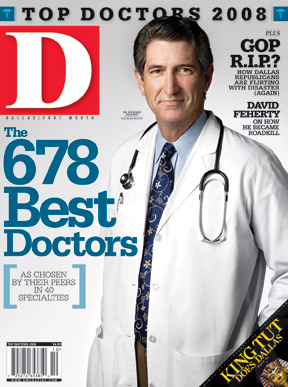For one week, they worked 18-hour days, performing open-heart surgeries, echocardiograms, and catheterizations on poor children who might otherwise never have gotten medical care. The 27-member team from Children’s Medical Center Dallas was led by two surgeons, Dr. Hisashi Nikaidoh and Dr. Steven Leonard. The mission, their second to San Pedro Sula, Honduras, was made possible by the Friends of Barnabas Foundation.
I traveled with the team to document their efforts and was not prepared for what I saw. Cemesa Hospital appeared ill-equipped to handle a thorough physical exam, much less open-heart surgery. The team operated with instruments they’d packed in Tupperware. But the hospital conditions were the least of their worries. San Pedro Sula is a city where a passing Hummer hints at the drug trafficking that has hit the country. On the final day of the trip, there was an assassination attempt on a suspected drug dealer. The visiting doctors were called to help the victim—even as they worried that doing so would put their other patients in jeopardy.
The focus of their yearly missions remains helping the children. Many of them are blue because their damaged hearts don’t provide enough oxygen to the bloodstream. They travel by foot and by bus through the dusty Honduran mountainside to reach the visiting team of surgeons. The risk is worth it. For most, it’s not only a chance for a normal life. It’s their last chance for survival.
 |
| Eduardo, 6, arrived in near-critical condition. He had club fingers, and his skin was blue due to a lack of oxygen in his blood. He had severe oral infections because of malnutrition. His condition was made worse by his family’s indifference. Given their poverty, they considered him too sick to care for. |
 |
RIGHT: From left: R.N. Trena Freeman, cardiac fellow Tejas Shah, child life specialist Audrey Speck, respiration therapist Joe Cram, and cardiac intensivist Dr. Daniel Stromberg travel dirt roads through Honduras on their way to the hospital and their
grueling week of work.
 |
| On the bus trip, during which the team meets residents from coastal cities during a “day of meditation” before beginning the marathon series of surgeries, they get a firsthand look at the poverty that contributes to the many heart defects they will encounter. |
 |
| Eduardo’s aunt stands with her baby in a concrete building on a plot of land shared by two families and their livestock. Eduardo’s family tends the land that surrounds the home. They live with the cows, horses, dogs, and chickens that roam the area. Doctors say the unsanitary conditions contribute to the high rate of disease here. |
   |
| LEFT: This photo was not staged. The tubes carry venous blood to an external oxygenator, and then it is pumped back into the patient. MIDDLE and RIGHT: Dr. Steven Leonard (back to camera) and Dr. Hisashi Nikaidoh (now with Children’s Hospital at St. Francis in Tulsa) perform surgery to repair Eduardo’s TOF, or tetralogy of Fallot, a congenital heart defect. In the United States, the procedure would have been performed before the child turned 1. |
 |
LEFT: In the makeshift pediatric ICU, in the foreground: Helen Johnson, a cardiovascular ICU nurse, and respiration therapist Joe Cram are part of the Dallas Children’s team. They work to stabilize a patient who just finished open-heart surgery.
“Even when you tell parents that there is nothing that can be done, they are so grateful for the time we took to even look at their child.”
Trena Freeman, R.N.
 |
RIGHT: A woman came with her son Alan, 19, who has scoliosis, in addition to his heart defect. Alan’s father must carry him everywhere, as the family doesn’t own a wheelchair. Alan’s scoliosis made his case difficult, as the pressure that is applied unevenly to his lungs due to the curvature of his spine could cause problems in surgery. He would also require an extended stay in the ICU post-op to monitor his progress. His mother’s face remained calm as she was told the procedure would have to wait until next year.
“With just one week, there’s only so much we can do. But we’re happy to accomplish what we can.”
Dr. Steven Leonard
  |
| LEFT: Lester, a 4-year-old who had surgery for TOF earlier in the week, has been granted permission to go home. The turnaround time is much quicker now for such patients than even just a few years ago, as both the technology and the surgeons have improved. RIGHT: Emely and her parents traveled from a remote part of Honduras on the chance that the doctors could fit her into their schedule. They could not. But she was later brought to Virginia, where she underwent successful open-heart surgery. |





